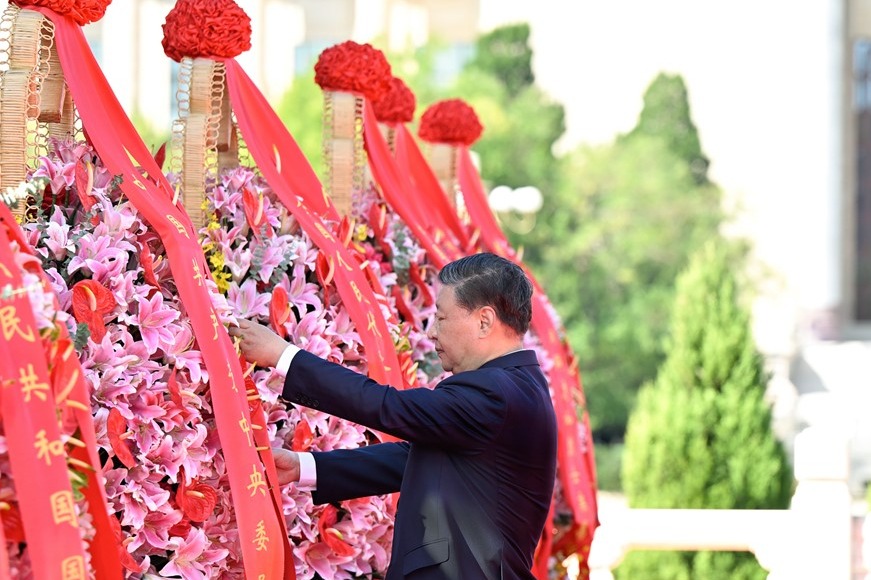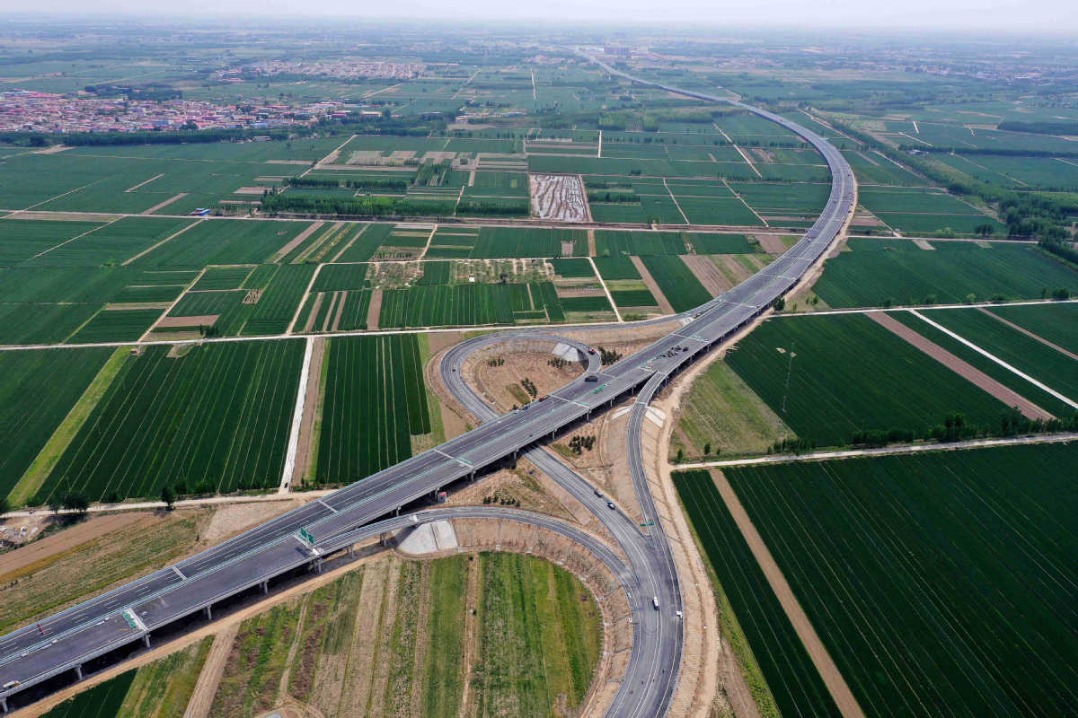Bonds of amity


Cultural exchanges and people-to-people interactions have served as a strong foundation for the friendship between Cambodia and China
Since establishing diplomatic relations on July 19, 1958, Cambodia and China have witnessed a steady growth in their bilateral cooperation across various domains. From political dialogue and economic collaboration to cultural exchanges and people-to-people interactions, the relations between the two countries have thrived, strengthening bonds of friendship and mutual trust.
Over the years, Cambodia-China relations have deepened and flourished, leading to mutual benefits and contributing to regional stability and prosperity. The Belt and Road Initiative, in particular, has emerged as a transformative framework for connectivity and cooperation, offering both countries unprecedented opportunities for sustainable development and cooperation in an interconnected and interdependent world.
Sixty-five years of diplomatic ties between Cambodia and China have laid a strong foundation for a multifaceted partnership. Historically, both countries share cultural and economic linkages that span centuries. However, it was in 1958 that formal diplomatic relations were established, and since then, the relationship has grown from strength to strength. China has been a steadfast partner and ironclad friend in Cambodia's economic development, offering significant aid, investments, and technical assistance. Likewise, Cambodia has consistently upheld the one-China policy and has been a partner of China in regional and international forums.
The friendship between Cambodia and China is not only built on shared economic interests but also on a sense of mutual respect and trust. China's support for Cambodia's infrastructure development, education and healthcare sectors has had a positive impact on the lives of Cambodians, fostering goodwill between the two nations.
Cultural exchanges and people-to-people ties have served as a strong foundation for the friendship between Cambodia and China. Educational and cultural exchange programs, scholarships and twinning arrangements have nurtured mutual understanding and friendship between the two nations. These interactions have not only enriched academic and cultural landscapes but have also fostered lasting personal connections, promoting goodwill and cooperation at the grassroots level.
Economic cooperation between Cambodia and China has been instrumental in propelling both nations toward shared prosperity. China is Cambodia's largest trading partner. Last year, the bilateral trade volume reached $14.5 billion. The bilateral free trade agreement has been the catalyst for increased trade volume, in which China favors for 97.53 percent of Cambodia's exports. China is also Cambodia's top investor. Last year, foreign direct investment to Cambodia from China accounted for 90.5 percent of total FDI to the kingdom.
Early this year, Cambodia and China reached a consensus on the China-Cambodia "Diamond Hexagon" cooperation framework focusing on six areas of cooperation including politics, production capacity, agriculture, energy, security, and people-to-people and cultural exchanges.
Both sides are also working on another five-year action plan of cooperation to realize a community with a shared future. Notably, Cambodia is one of the first Southeast Asian countries that signed a bilateral agreement on the action plan to implement the community with a shared future.
The Belt and Road Initiative, launched by China in 2013, represents a visionary approach to connectivity and cooperation across continents. Spanning Asia, Europe, and Africa, the Belt and Road Initiative aims to promote infrastructure development, trade, investment and cultural exchanges among participating countries. Cambodia's enthusiastic endorsement of the initiative has been instrumental in deepening bilateral cooperation and fostering regional integration.
The crucial step to propel Cambodia out of its development challenges is to enhance the alignment between Cambodia's development strategies and those of China. This alignment is pivotal for the effective utilization of resources and focusing on mutually beneficial priority areas. As a comprehensive strategic partner, Cambodia has benefited from policy coherence, enabling the concentration of resources in areas of common interest. In 2016, during President Xi Jinping's visit, both nations committed to expedite the coordination between the Belt and Road Initiative, China's 13th Five-Year Plan (2016-20), Cambodia's Rectangular Strategy and its Industrial Development Policy 2015-25.
Through the Belt and Road Initiative, Cambodia has witnessed significant improvements in transportation infrastructure, including roads, bridges and ports. These developments have enhanced trade connectivity, reduced logistical costs and boosted economic growth. Moreover, the initiative has facilitated people-to-people exchanges, fostering cultural understanding and building bridges of friendship between the two nations.
With its strategic location, Cambodia has become an important partner in the Belt and Road Initiative, acting as a gateway for regional economic integration. Projects such as the Phnom Penh-Sihanoukville Expressway, Phnom Penh-Bavet Expressway, the new Phnom Penh International Airport, the new Siem Reap International Airport, and Sihanoukville Special Economic Zone have improved transportation networks and facilitated trade flows, promoting regional connectivity and bolstering Cambodia's economic competitiveness.
As Cambodia and China commemorate these milestones, it is essential to emphasize the shared vision and opportunities that lie ahead. The Belt and Road Initiative presents Cambodia with unprecedented prospects to further modernize its infrastructure, promote sustainable development, and tap into the immense potential of regional economic cooperation.
Moreover, the strategic location of Cambodia along key Belt and Road routes positions the country as a vital link between China and Southeast Asia. This provides Cambodia with a unique opportunity to leverage its position and develop into a regional hub for trade, investment and innovation.
Both countries must work together to ensure that the benefits of the Belt and Road reach all segments of society, including vulnerable communities, to foster inclusive development. Efforts should be made to align the Belt and Road projects with Cambodia's development priorities and enhance local capacity building for sustainable growth.
As both nations move forward, it is vital to build upon this foundation and explore new avenues of collaboration, ensuring that the Belt and Road Initiative serves as a catalyst for sustainable development, cultural exchanges and people-to-people bonds. By embracing the principles of mutual respect, equal benefits and inclusivity, Cambodia and China can continue to navigate the complexities of an ever-changing global landscape.
The digital economy and innovation sectors hold immense potential for cooperation between Cambodia and China. Knowledge exchange, technology transfer and partnerships in areas such as e-commerce, fintech and digital governance can foster economic growth, job creation and digital inclusivity. Such collaboration will drive both nations toward a digital future, unleashing new opportunities and empowering their societies.
Continued emphasis on people-to-people exchanges, cultural collaborations and educational programs will deepen mutual understanding, friendship and trust between the two countries. Encouraging more student exchanges, academic partnerships, and cultural events will nurture the next generation of leaders, fostering long-term ties and a community with a shared future.
The author is the president of the Asian Vision Institute, an independent think tank based in Phnom Penh. The author contributed this article to China Watch, a think tank powered by China Daily. The views do not necessarily reflect those of China Daily.
Contact the editor at editor@chinawatch.cn.


































